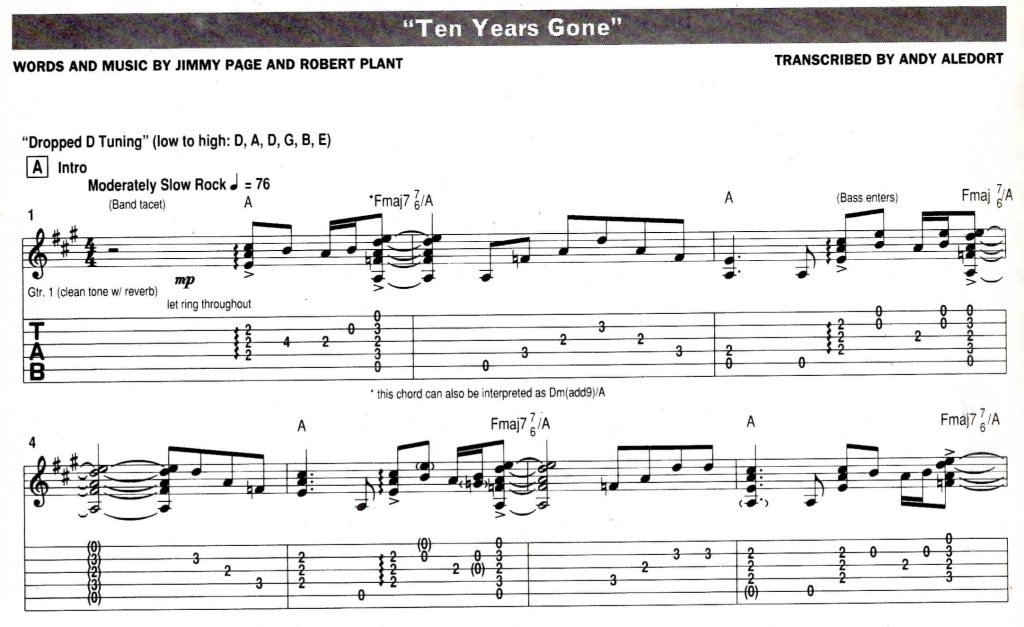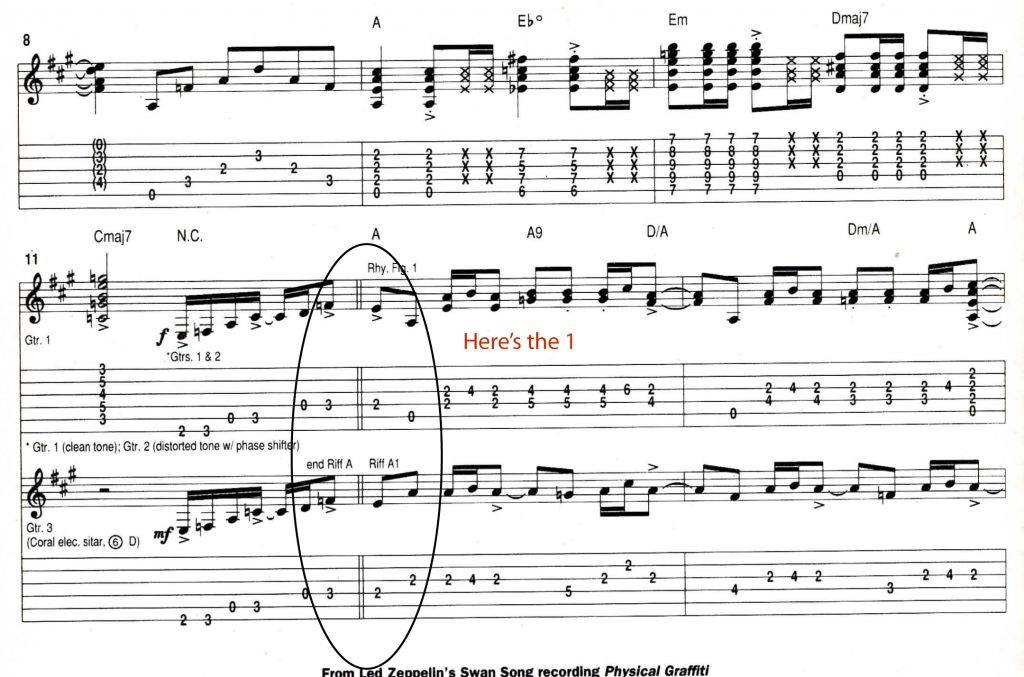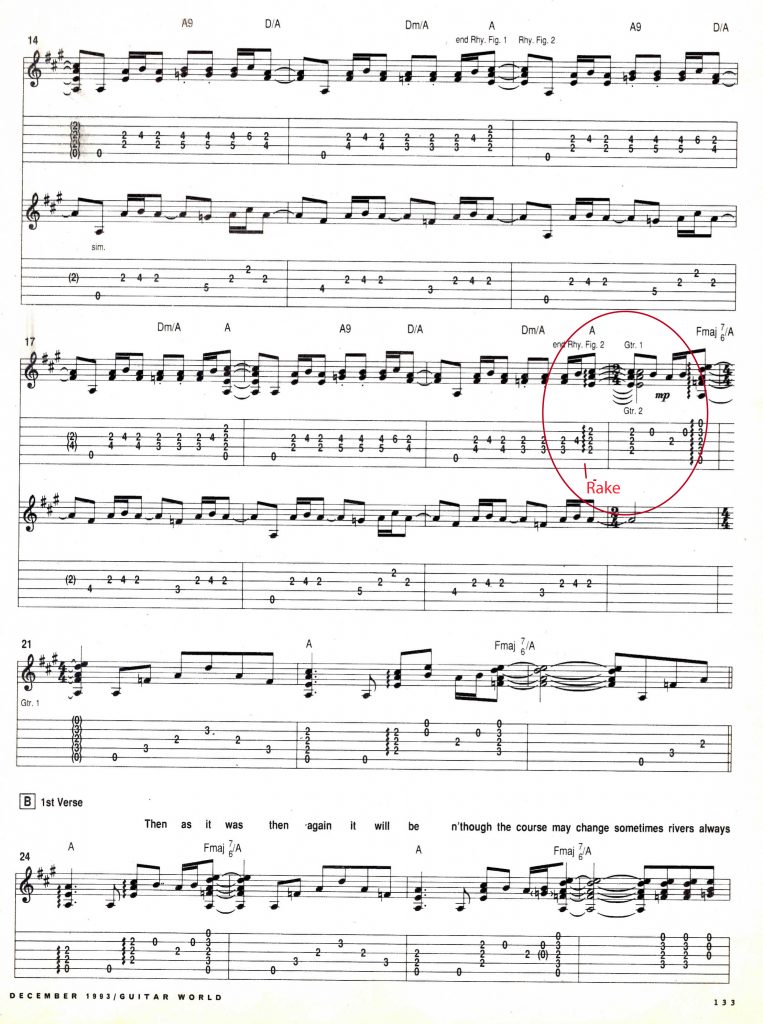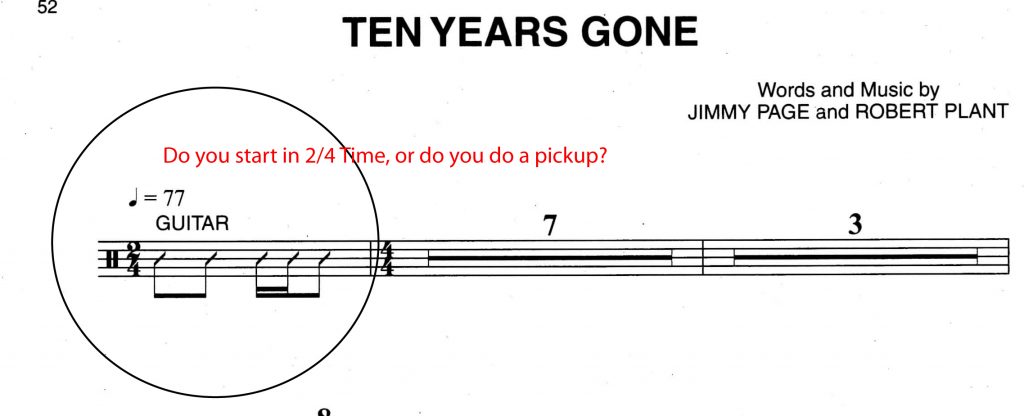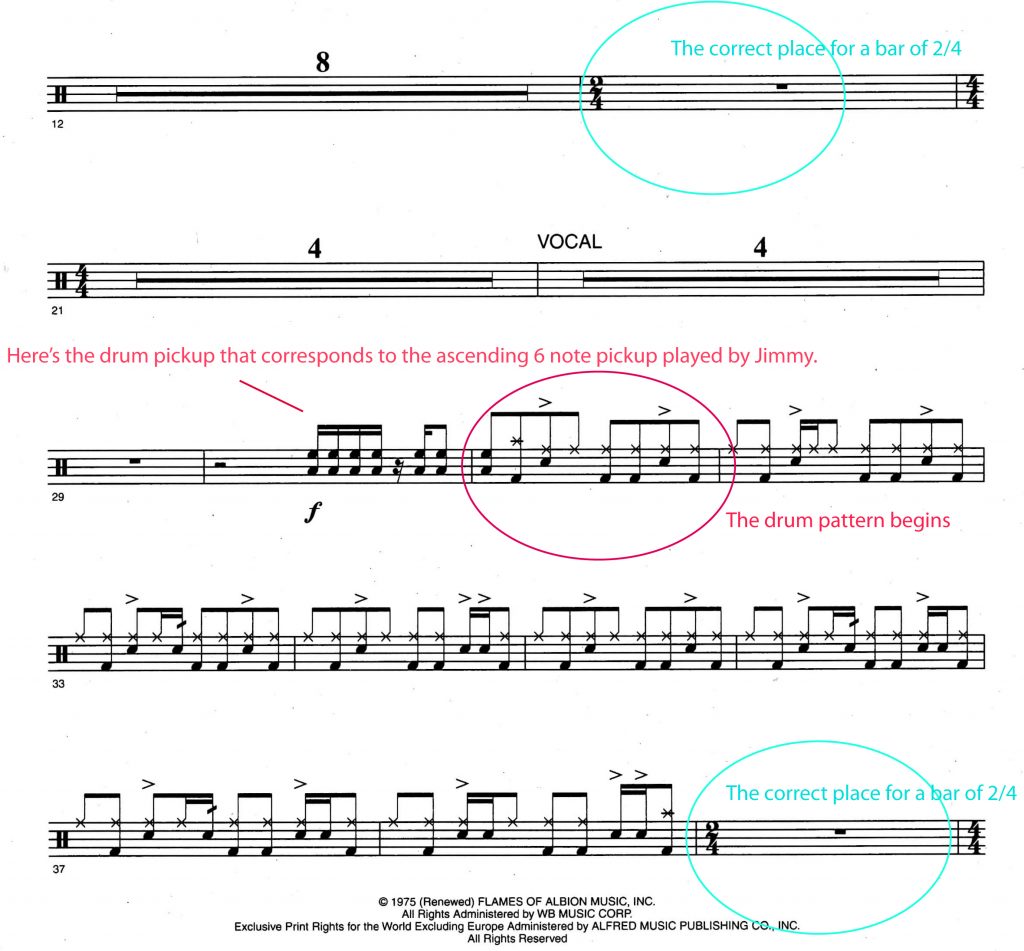Decisions
When recording in a modern day DAW we generally use a pre-configured time grid. In order to set up this time grid we need to know or make decisions about several factors related to time for the song we are about to work on. Time signature is one, and BPM (beats per minute) is the other. When working on a cover, the original recording needs to be carefully studied as these things are not always so easy to discern. Led Zeppelin present several challenges in this regard, the first being that they often didn’t record to a click track; they relied on their own internal sense of time so some of their songs have a drift. The second challenge is that Zeppelin, as a band, were masters of time; using time creatively to their full advantage. For this reason their catalogue is not so easy to chart. Ten Years Gone is no exception and there are a couple really critical and tricky elements related to time and time signature that you must get right before you start, or you are in for a world of hurt.
The Guitar Score
In the guitar score, you’ll find Ten Years Gone starts out in 4/4 time, with a quick rake introducing the 3rd beat almost like a pick-up. That little rake that starts the 3rd beat is why it is more correct to start off the guitar score in 4/4 as opposed to 2/4 because it almost anticipates that 3rd beat (not quite, but almost). This was Andy Aledort‘s interpretation in the December 1993 Guitar World transcription.
Andy is a master transcriptionist (and a fantastic guitarist) and his transcription for Ten Years Gone is the most accurate I’ve encountered. Andy could have started this first bar in 2/4 if he wanted, but I suspect he made this choice because in subsequent measures, where this same figure appears, it is preceded by a quick pickup note on the “&” of 2 (see measures 3, 5 & 7). Another reason it might be more appropriate for the guitar score to start in 4/4 here is that Jimmy Page starts the song unaccompanied which means he’s in control of time at this point. He is very much leading the band – including Bonzo – so time starts when Jimmy counts it in. Given how he plays and naturally feels this riff (and given that the rake almost anticipates the beat, and how it’s usually preceded by a pickup note on the & of 2 later in the piece) he would be inclined to count it in as “1 & 2 & …”.
The 1.
Jimmy’s intro has a relaxed, almost dreamy quality to it, and time feels very fluid here (though it’s not free time) until he gets to another pickup right before Rhy Fig 1. At this point Jimmy locks into a more mechanized rhythm to play the signature riff and firmly establishes where the 1 is situated. The pickup is our cue here (that ascending 6 note run) that things are about to start moving.
The 2/4 to 4/4 Gamit
Once Rhy. fig. 1 & 2 are played through to the end of measure 19, Jimmy plays a more exaggerated rake that actually does start on the “&” of 4 and there’s a quick time signature change to 2/4 for a single measure as he returns to the guitar figure of the introduction. That rake here is really exaggerated to make it feel like you are falling into that bar of 2/4 before reestablishing time again with 4/4 in measure 21. It’s like Jimmy is falling out of the riff and back into the introduction. This pattern of changing the time signature to 2/4 then back to 4/4/ when Jimmy returns to play the introductory guitar figure happens throughout the song.
The Drum Score
At first the drum score looks like it is incorrect because it starts with a bar of 2/4 instead of 4/4. This isn’t specifically an error, and the effect itself is inconsequential, but the reason for it may be philosophical. In some sense time doesn’t yet exist for the band until Jimmy establishes it by playing his part. Jimmy doesn’t count them in – he counts himself. They are listening for his cue – for him to play the figure which is itself noted in the drum score. The other reason the drum score reflects this is that it anticipates the obvious time signature change that we just looked at — so basically for structural consistency the 2/4 is more consistent here.
Getting past the question of 2/4 vs 4/4 for the first bar, what really matters most is where the 1 is. To reinforce the idea of where the 1 should start, we see that the drum intro itself mirrors Jimmy’s 6 note ascending line before he kicks off playing Rhy. Fig. 1. The fact too that Bonzo’s part is an obvious drum intro/pickup we can see how it clearly establishes the location of the 1 at the beginning of the drum pattern and justifies the choices we made with respect to the time signature.
I spend the time sketching this out for you because there are some historically bad transcriptions out there that have messed this up so I’m trying to correct the record. Not finding and maintaining your understanding of where the 1 is in any Zeppelin song will cause all kinds of problems for you. It can be very obvious when listening to bands play Zeppelin when they have failed to do their homework because the feel is all wrong. Robert once asked “Where’s the bridge?” He should have asked “Where’s the 1?”
Feature Image Credit: Purton Ships Graveyard, by Richard Walker, via Flickr, CC by 2.0


